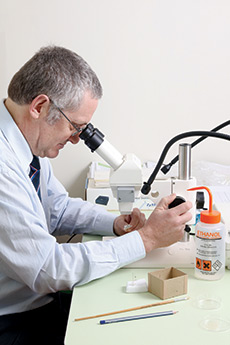Beating the bad Aussie mozzie

Professor Philip Weinstein Professor Philip Weinstein is an understated scientist; it was well into the interview before he mentioned in passing that there is a cockroach named after him—a blind, hairless, cave-dwelling cockroach at that! And he doesn’t mention his string of strongly cited research papers or his work on six prestigious projects for the Australian Research Council. Or his major study on air quality and respiratory health, for the Cooperative Research Centre for Asthma and Airways.
But he talks with passion about leading the University’s School of Biological Sciences. “The School’s objective is to support excellent researchers and it is a privilege to help the next generation,” he says.
And he enthusiastically explains his research focus, improving human health by protecting the environment. It’s a neat combination of his two scholarly specialities, medicine and biology, reflected in his 100-plus papers on water-borne and mosquito-transmitted disease.
However, there is more to the model than Aussie mozzies. It applies to all sorts of environmental impacts. “My research involves building a methodology that translates to other diseases in other environments,” he says, pointing to his work on rat-borne Leptospirosis in Samoa. The model can also apply to other infectious diseases of the developing world including Ebola, HIV and Bird Flu, for alarming example.
He warns that human demands for natural resources come at a cost and that well-intentioned but ill-applied health measures can do great harm. Thus Professor Weinstein has long warned that draining a swamp to eradicate malarial mosquitos also removes a source of biodiversity for future generations. “Ecosystem dynamics are rarely linear and changes to address one problem can often create another. One reason Ross River virus is becoming more common in Australia is that irrigation and the impact of dryland salinity means there is year-round water for the mosquitos that carry the disease,” he says | 
